Looking for a quick and effective update for your living space? Opportunity is knocking in the form of stylish new interior doors and updated mouldings.
From flat to fancy, doors and mouldings are available in a host of different styles. There are numerous options to consider for both traditional single-family homes and multi-family units, where space may be more limited.
In this article, Contractor Advantage checks in with vendors and suppliers to find out what types of doors and mouldings are popular with modern homeowners.
Take a look in the mirror
Renin, a wholesale building materials supplier, has been providing door solutions for almost 60 years. Headquartered in Brampton, Ont., the company serves customers across much of the globe. According to Tim Kuhn, Vice President of Marketing, Product Development and Customer Service, its main product is sliding doors.
“We focus on sliding doors,” he said. “We were actually the first company to make a sliding mirror door in the 1960s.”
Kuhn said the popularity of sliding doors hasn’t diminished and they continue to be the company’s main product, especially now that residential homes are getting smaller.

Photo courtesy of Renin
“We noticed building footprints are almost 15 percent smaller than they were in 2015, and sliding doors are a really good solution for smaller spaces.”
Even as today’s homes are shrinking in size, the cost of building has increased by 20 to 25 percent, said Kuhn. “Cost-effective sliding doors can help to bridge that gap, with their space-saving qualities.”
The fact that sliding doors do not swing into a room is a big selling feature for homeowners in condos and smaller homes, since traditional doors often obstruct light switches, beds and vanities.
Mirrored sliders have been around for decades and remain a great option, especially in smaller bedrooms. “They are functional because you have a door and a mirror, which brightens up the space,” said Kuhn.
These doors have evolved with the times, however. Buyers can opt for designs in the glass if they’re looking for a little more flare. Options also include premium aluminum frames, although silver, white and brass metal-framed doors are the most popular. Coloured framing gives an upgraded look.
“We are seeing more black or white, with black perceived as an upgrade over white,” said Kuhn.
Sliding barn doors have been popular since about 2015 and they are still selling well, although the style has changed.
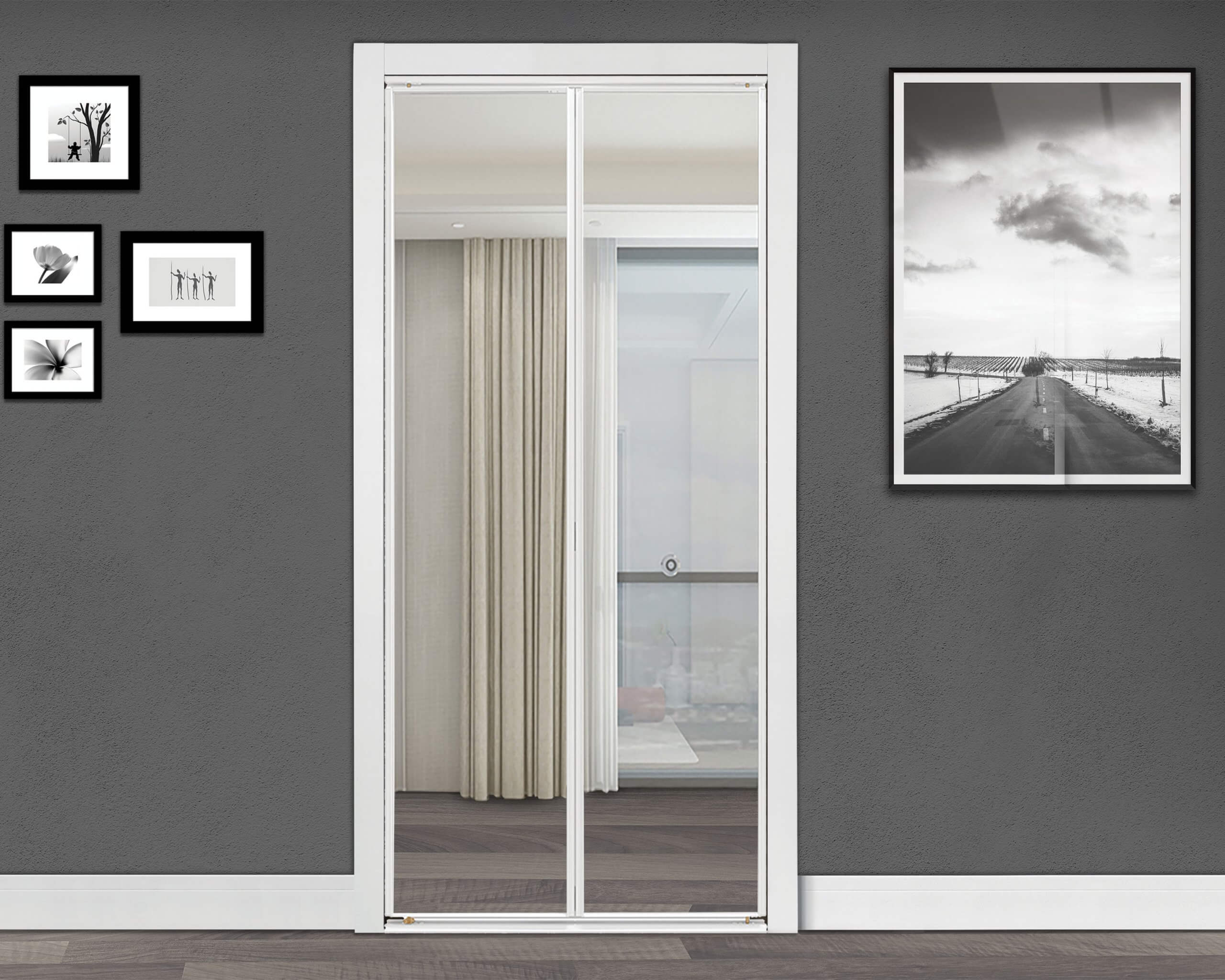
Photo courtesy of Renin
“It used to be that barn doors were solid wood, with a rustic look with exposed metal hardware,” Kuhn recalled. He said they used to be the focal point of a room, but not so much anymore. Gaining in popularity are pre-finished or primed white doors that create a more contemporary look, with lower profile hardware. “Homeowners are looking for something a little less conspicuous that better matches their other doors.”
The evolution of barn door construction has also made this option more widely available. “We are now offering a hollow core barn door over just a solid core,” said Kuhn. He added that a hollow core door can be painted or stained at a more attractive price point. He feels this has brought in a new consumer group that may have otherwise overlooked a barn door option.
Kuhn, a self-professed “nature nut,” believes that consumers are more aware of a product’s environmental impact than ever. Since doors are not often replaced, he feels the best chance for the segment to become more sustainable will be from packaging improvements – which Renin already strives to do, he said.

Photo courtesy of Renin
Beyond packaging, quality door construction is another way to reduce the impact on the environment, noted Kuhn. “We build our doors to last, and by using wood and not plastic on our doors, I think we are helping to create a more sustainable environment.”
While supply chain issues continue to be a concern in the building materials industry, Kuhn said that Renin began identifying alternative suppliers pre-pandemic, which has vastly mitigated any concerns.
“Having options gives us the best opportunity to compete on price and timing,” he concluded. “We have suppliers in North America, Mexico and overseas, in order to reduce supply interruptions.”
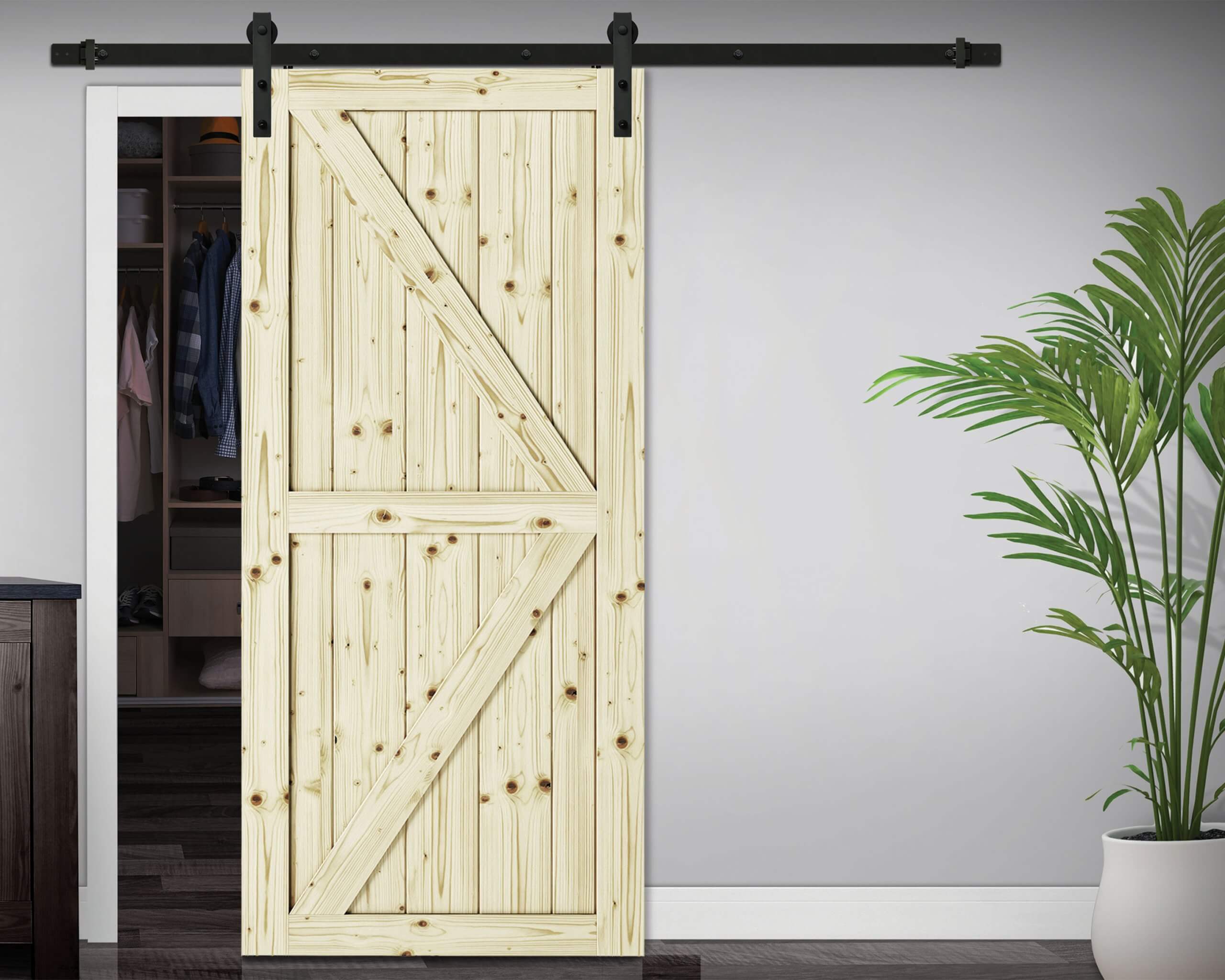
Photo courtesy of Renin
Going vertical
For almost 100 years, Metrie, a family-owned Canadian business, has been manufacturing and supplying solid wood and composite moulding. As North America’s largest supplier, boasting 28 distribution centres and six solid wood and MDF manufacturing facilities across the continent, the company continues to grow its product line, including stylish panelling options.
“In-wall panelling, we’re seeing a lot of trends with vertical lines,” reported Michelle Downey, Metrie’s Director of National Accounts (Canada). In general, she believes the shift to a more contemporary design style will continue to trend. Feature walls remain popular, with a modern twist. Slatwall, tambour and shiplap are being installed vertically, with the company’s Metrie Complete shiplap line being one of its top-selling prefinished profiles.

Photo courtesy of Metrie
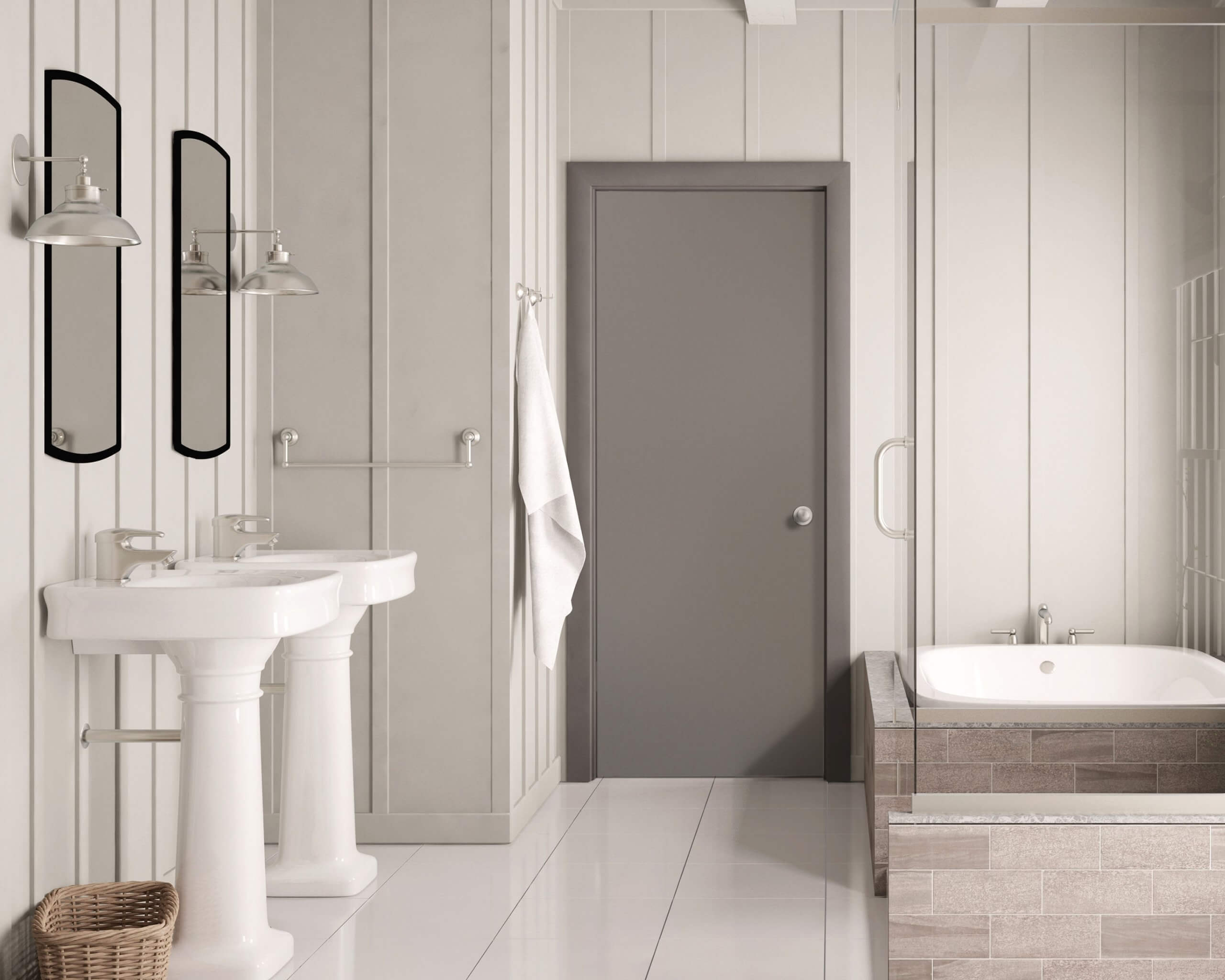
Photo courtesy of Metrie
The Metrie Complete line includes a selection of pre-painted, ready-to-install products. With the market still experiencing labour shortages, Downey said there is a big need for prefinished product solutions. Contractors are always searching for ways to improve build cycle times, she explained. “Ready to install moulding as well as (pre-hung) doors continue to grow.”
As consumers feel the pinch of both time and money, Metrie Complete is also popular with DIYers.
“It makes work easier for busy weekend warriors,” said Downey.
In keeping with its goal of being DIY-friendly and cost-effective, Metrie launched a line of boxed slat wall panelling in three finishes: white oak, red oak and black.
“For those slatted options, we see a preference to prefinished options, with white, black and woodgrain finishes being the most popular,” said Downey.
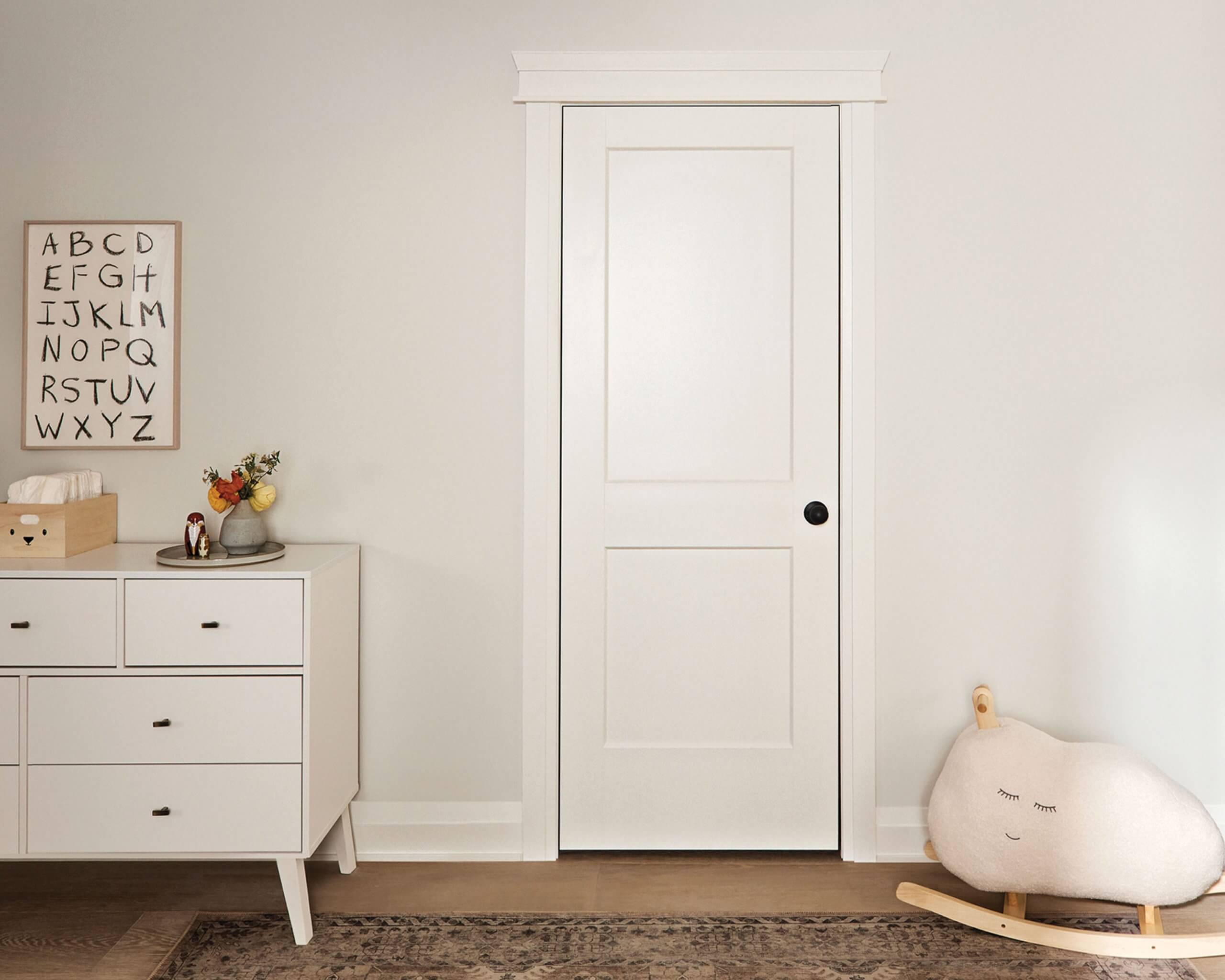
Photo courtesy of Metrie
Clean lines in moulding and door profiles continue to be in demand in 2024. Flat stock boards are still popular for casing and baseboard combinations, and mouldings are tracking along the modern contemporary style as well. Downey said that primed and painted MDF and finger joint pine appeals to consumers more than stainable applications.
In addition to millwork, Metrie supplies interior and exterior doors across Canada. Moulded panel shaker doors continue to be in demand across all markets. With one-, two- and three-panel shaker doors being the most popular, the company plans on expanding these lines. “Later this year, we’ll also be launching the latest door in this series, a five-panel recessed moulded shaker, called the Bayshore,” offered Downey.
When asked if there are any supply chain issues in the moulding and interior door market, Downey said freight costs are on the rise and shipping space is limited, especially from Asia. Freight increases can impact the cost of moulding and doors; some freight charges could be as high as 30 to 40 percent of the value of the container. She feels this will put upward pressure on imported mouldings and doors that come from South America, Southeast Asia and China.
As a large manufacturer, Downey said Metrie is well positioned to handle supply issues; plus, it partners with the best manufacturers in the world to realize a diversified and resilient supply chain. Supply disruptions are no longer an anomaly, she continued – they have become the norm.
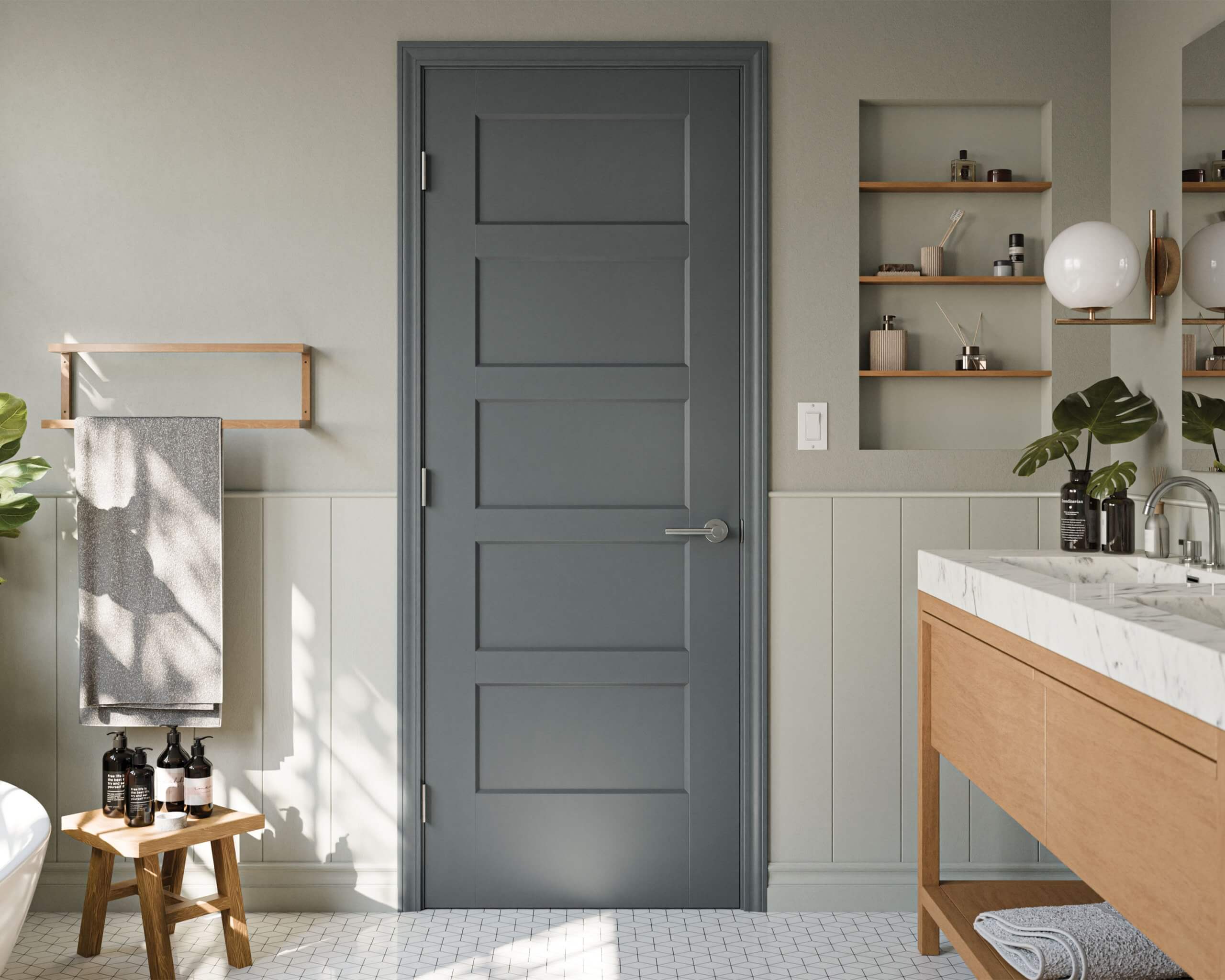
Photo courtesy of Metrie
While supply chain delays continue to present challenges, there are domestic influences on the moulding and door market, too.
“Today, there is a significant need for new homes across Canada as our population continues to grow at a record pace,” said Downey, adding that current interest rates have had a negative impact on new home construction – both single- and multi-family projects. Downey hopes construction starts will increase in the near future if the economic outlook improves.
“There is optimism that new home construction will bounce back as interest rates continue to decline.”
Flat panels and heavy casings
According to Hardy Rahn, Alliance Door Products specializes in doors, trim and hardware. Rahn has spent the past 16 years with the Canadian division of the family-owned company. The wholesale distributor has five locations in Canada, supplying a vast portion of the country from Vancouver Island to the Quebec border.
Rahn said door styles are aligning with today’s cabinetry. He has noticed a trend toward a very modern-looking, flat panel door, whether it is moulded or a stile and rail door.
“We do a lot of router flush doors; people are trending toward a design on a flush door,” he said, adding that consumers want doors to match their interior design, including the wood type.
As a distributor of residential and light commercial hardware, Rahn has a handle on what’s popular in door hardware. He noted that manufacturers are offering a few more options with a brushed brass finish. “We are seeing a bit more of that, but flat black handles that are a little bit wider continue to be the most popular.”
To surround the door, flat stock is still very popular. However, the size of the board is changing. “We used to see 2½-inch casings; a lot of times we are now seeing 3½-inch for baseboards and up to 4-inch trim for doors and windows,” said Rahn – the bigger the better, he added.
“Flat profiles are in, whether it is MDF, primed pine or any kind of hardwood species we carry.”

Photo courtesy of Alliance Door Products
The depth of casings is also increasing. Rahn relates this to the multiple options for wall coverings and their different depths. Whether it is a shiplap product or wall mouldings, the casing should be a little thicker than the wall covering, he noted. “A heavier casing creates a little more of a reveal against the wallboard being installed.”
Regional variations affect the popularity of materials used for door construction. Wood types like pine and knotty pine are prevalent in the Ontario market, while in the Prairies consumers are more apt to purchase rift-cut oak or maple doors. In British Columbia, vertical grain Douglas fir is popular.
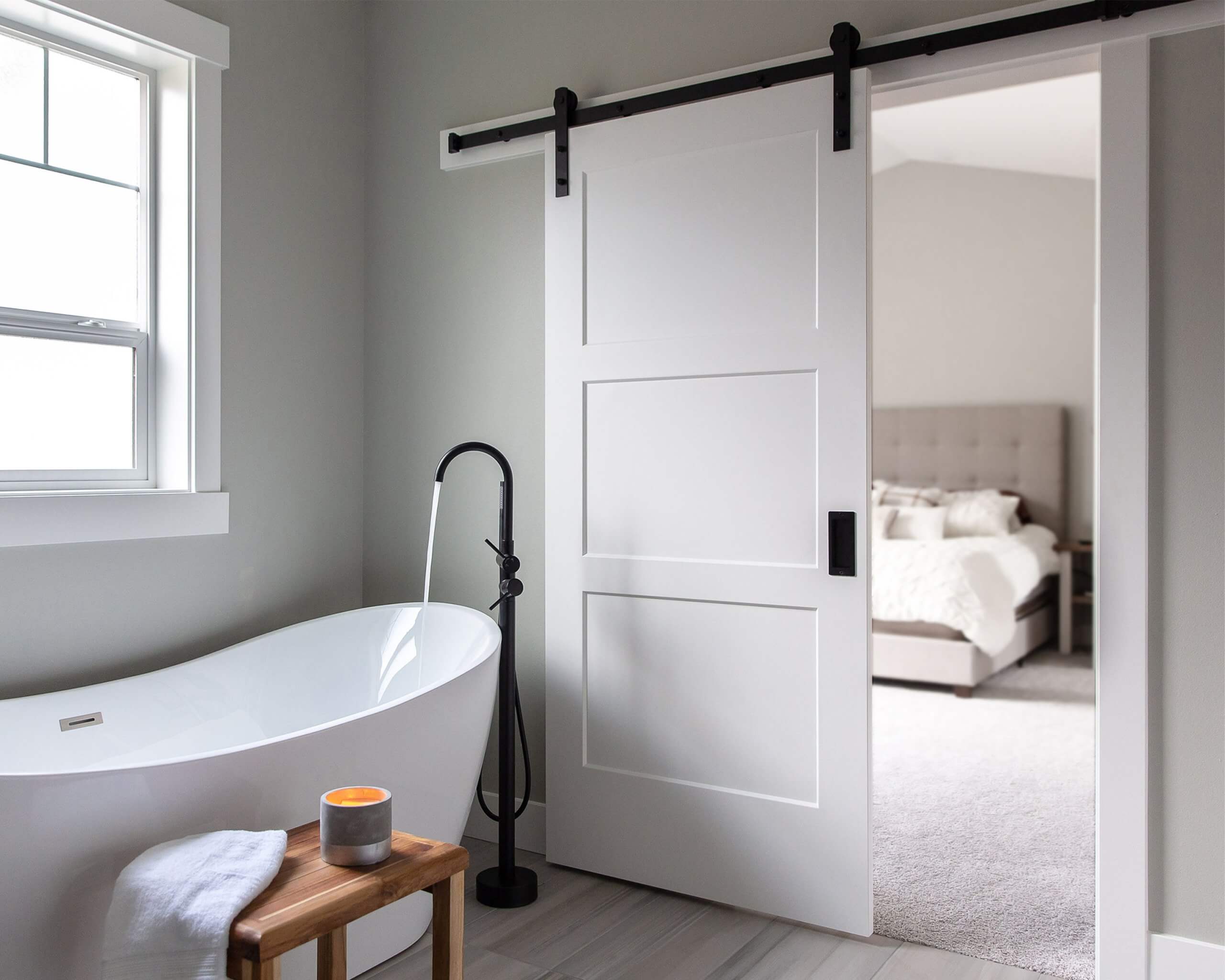
Photo courtesy of Alliance Door Products
No matter the type of wood, Rahn has seen a rise in solid core doors throughout the country. With room sizes getting smaller in new home construction, sound transfer can become an issue. “Sound Transmission Class (STC) ratings are very important,” he stated.
In the case of a laundry room or smaller bedroom, Rahn has also seen an increase in demand for ventilated doors. Alliance Door Products offers a vented door that exceeds hollow core door STC values. The ventilated door allows air to pass through to smaller rooms that need better air circulation. “We are trying to address both concerns: sound transmission and ventilation.”
Rahn noted that labour challenges across the market have dealers looking for more convenient installation, resulting in an increase in pre-hung door sales. Consumers are also concerned about where their materials are sourced. As a distributor, Rahn said Alliance Door Products takes care to align with the right manufacturers – that’s why the company deals with Canadian national buying groups.
To mitigate the effects of global conflicts, Rahn said it’s necessary to plan long-term to ensure the right products are at the right locations. He also noted that container costs have risen three to four times higher than a year ago, and shipments have been detoured out of Asia and South America. “When containers take a couple of weeks longer to arrive, it obviously affects supply chains.”
Although interest rates have started to lower and inflation has eased a bit, Rahn said there is a need to jump start Canadian single-family home builds. “We see these (economic developments) as positive steps; it will drive some product need, but I think our industry is well positioned to handle that.”

Photo courtesy of Alliance Door Products
Crown and chair mouldings on the decline
Pat Hurtubise, a Millwork Sales Specialist for Taiga Building Products, has been in the moulding industry for 16 years. Taiga is a North American building materials and construction supplier with 15 distribution centres across Canada. Over the past few years, the company has seen the market shift away from crown mouldings and chair rails.
“Traditional architraves, crowns and chair rails, which were once popular in single-family dwellings, are now on the decline,” reported Hurtubise.
Modern style mouldings have been the preference for some time now, with flat baseboards and eased two edges (E2E) casings now common in single and multi-unit housing. The flat trend translates to wall coverings as well. “Wall coverings like MDF shiplap have also been popular in markets across Canada and the U.S.,” he confirmed.
Sales of modern flat stock mouldings continue to dominate the market, and those with a beveled top edge are also popular.
Regional markets do dictate the popularity of various moulding materials, Hurtubise confirmed. Products that offer ease of installation and need nothing but a coat of paint are top sellers for Taiga. “Primed MDF and primed finger joint pine are predominantly favoured.”

Photo courtesy of Taiga Building Products
When it comes to sustainable and eco-friendly products, “these two factors have become important to our consumers, and rightly so.” Hurtubise explained that many regulations are in place to minimize the impact of the building materials industry. Two examples are the Forest Stewardship Council (FSC) certification for forest management and chain of custody, and CANFER certification in accordance with Canada Formaldehyde Emissions.

Photo courtesy of Taiga Building Products
Hurtubise said Taiga is committed to responsible practices in pressure-treated wood production and manufactured components. As consumers become more concerned with industry effects on the environment, he feels it is important to “enhance the longevity of wood products, thereby reducing the demand for fresh lumber in construction projects.”
He agreed that supply chain issues are constantly affecting the building supply market. “For example, ocean freight has been vastly impacted by the conflict currently going on in the Red Sea.” He explained that vessels must go around the Cape of Good Hope to avoid the Red Sea passage, which can add nine or more days to transit time. This additional transit time results in less capacity and higher freight costs.
“Routes from China to North America are experiencing the highest freight rates since the peak of Covid, and availability for space is limited.”
The supply issues are not isolated to Asia, Hurtubise added. South American supply recently suffered from a five-week port strike in southern Chile, which slowed deliverables. He added that the threat of a rail strike in Canada has resulted in uncertainty around domestic supply.
Taking into account that Taiga utilizes road, rail and ocean transportation, Hurtubise feels the company is well prepared to handle supply challenges.
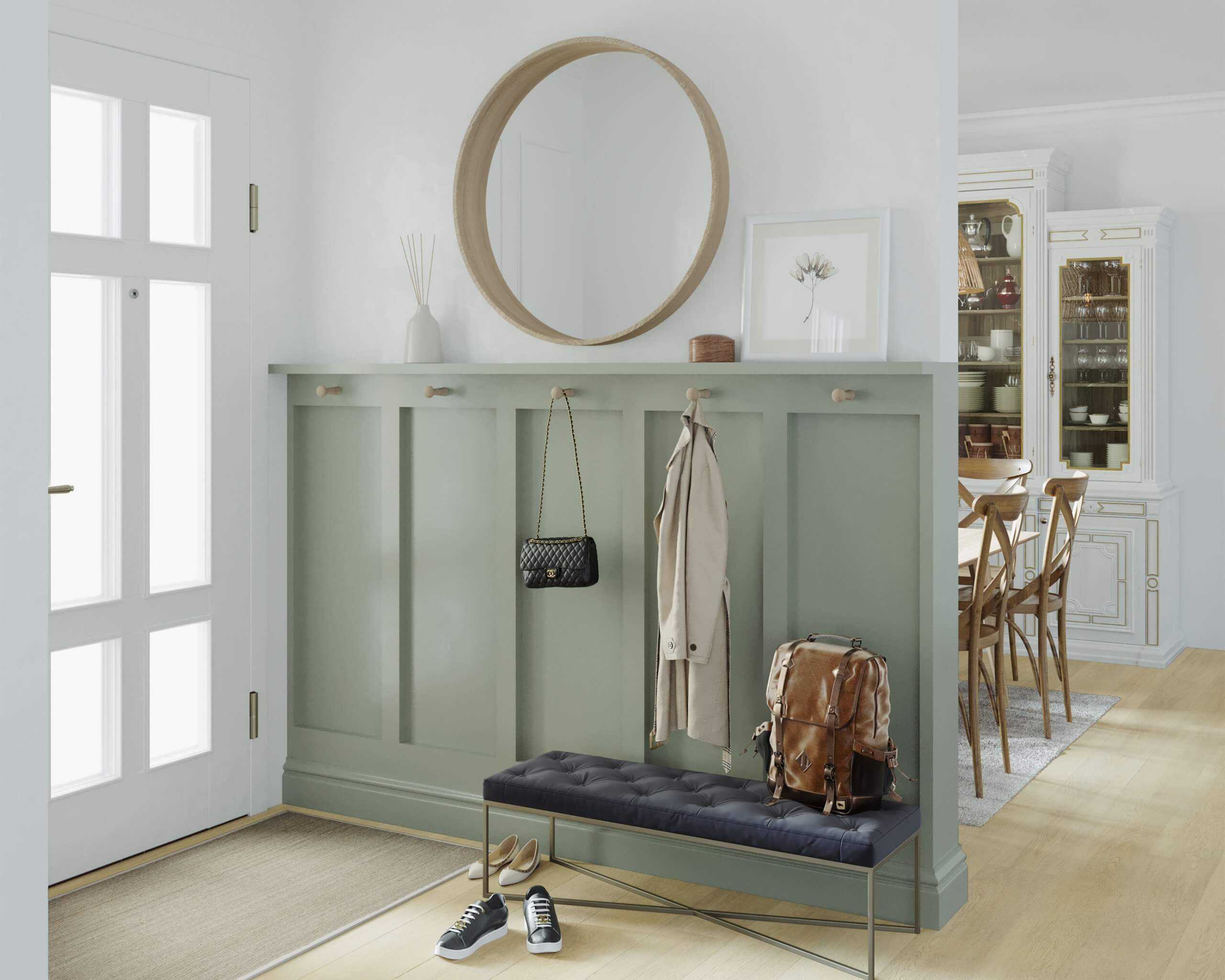
Photo courtesy of Taiga Building Products
Mouldings with clean lines
David Stojni, Vice President of Sales at Specialty Building Products (SBP) Canada, has spent nearly 30 years in the building materials industry. SBP is the parent company of Alexandria Mouldings, which operates distribution centres in Calgary, Alta., Laporte, Indiana; and Jenkins Township, Pennsylvania, as well as distribution and manufacturing centres in Alexandria, Ont., and Moxee, Washington.
The company’s primary focus has been to serve customers with moulding and millwork products, with a 100 percent fill rate. Alexandria has expanded its product mix to include specialty building materials such as ceiling products, laminated panels, and siding, with more products expected to be added in the future.
Stojni noted there hasn’t been a significant change in moulding trends for 2024, with the market still favouring modern, flat profiles. He also reported continued success in what Alexandria refers to as “surfaces,” particularly with textured panels like shiplap and reeded panels.
Clean lines with crisp profiles are still high-volume sellers in mouldings. The straight lines blend well with traditional and modern designs. The trend started in the West and has moved eastward across Canada, noted Stojni. “Regionally, things may differ slightly, but that flat stock look is still the dominant profile.”
Cabinet and door styles can vary from traditional to modern in today’s market. Stojni feels flat stock is versatile enough to blend with either look, and that is key to its continued success – for example, it matches well with popular shaker doors. Mouldings provide the opportunity to build up, allowing for a thicker profile when necessary.
“The simplicity of the profile makes them timeless and versatile, depending on the designs,” said Stojni.
Primed mouldings are dominating the market as contractors and DIYers look for ready-to-paint products. MDF and finger-jointed pine are the most popular choices.
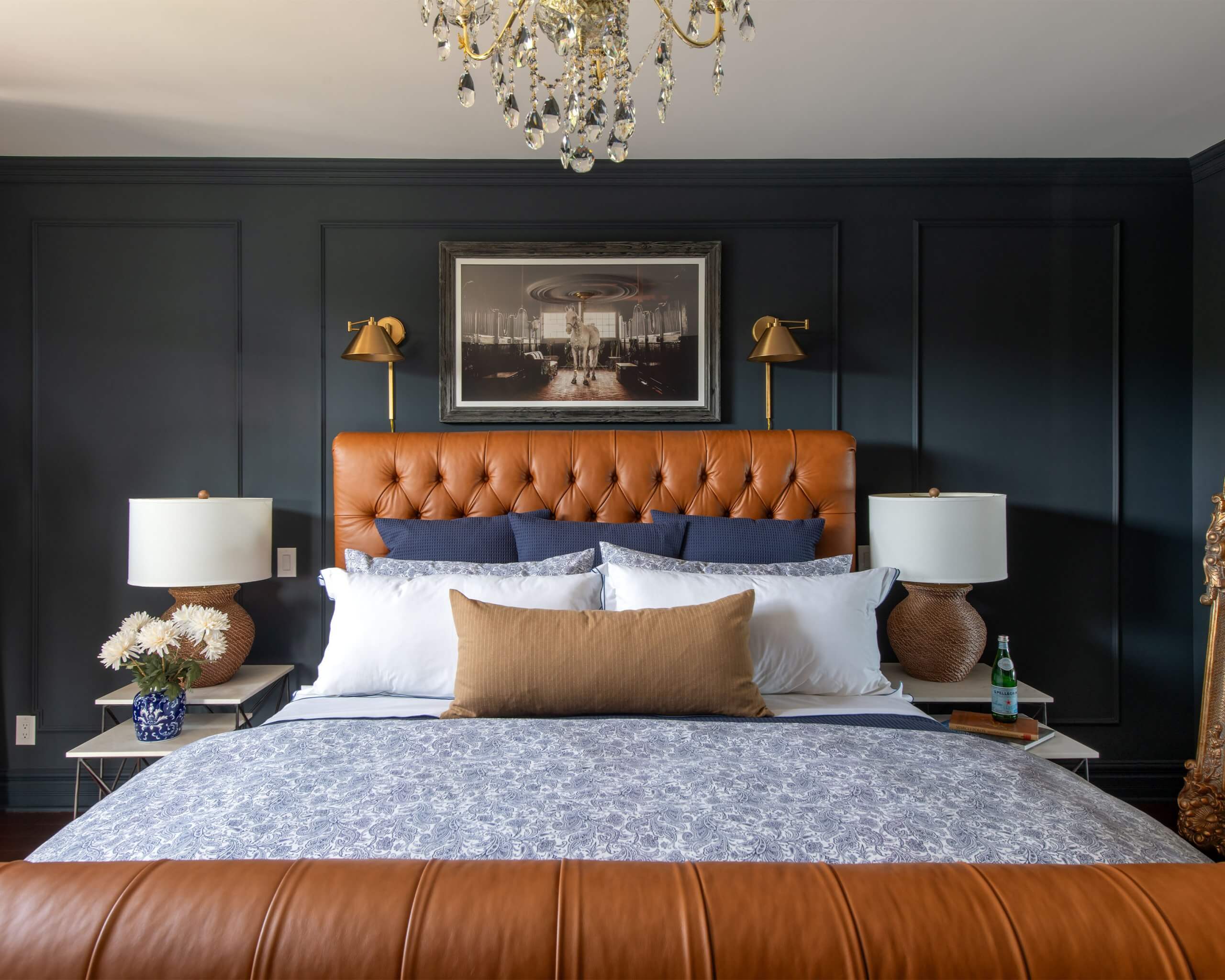
Photo courtesy of Alexandria Moulding
“Most mouldings in today’s market are being painted,” noted Stojni. Where a project requires a stained hardwood moulding, white oak is gaining momentum since it blends well with current cabinet and flooring trends. “White oak is particularly popular for cottages and lake houses.”
Alexandria is concerned about the environment, and sourcing materials from sustainable, well-managed forests is an important part of the company’s acquisition process. Because several products are imported, customer requests to verify the compliance of overseas manufacturers has been on the rise. “Our customer base is keen to ensure we are working with partners that adhere to fair and socially acceptable practices,” said Stojni.
Although SBP manufactures a good portion of its products in North America, it has felt the impact of external global factors. Port strikes in Chile resulted in delayed containers, which have affected lead times and product availability. Shipping costs from Asia and South America have been on the rise, with freight costs skyrocketing over the last six months.
For Alexandria, domestic manufacturing has played a key role in keeping up with demand. Global conflicts have caused the company to look for alternate overseas suppliers in some cases, and Stojni feels the ability to manufacture product in Canada drastically reduced the impact of imported product disruptions.

Photo courtesy of Alexandria Moulding

Photo courtesy of Alexandria Moulding
However, “inflation is that one big gorilla that has been bothering our industry this year.”
With pandemic-era supply chain concerns mostly in the rear-view mirror, inflationary effects have slowed construction. Stojni feels contractors and DIYers have put projects on hold while waiting for interest rates to fall. “This has caused the Canadian building material industry to be a little bit soft this year,” he said.
Population growth in Canada is expected to drive demand and kickstart construction. If economic predictions are correct for 2025 and interest rates continue to fall, Stojni sees the resumption of stalled projects. If all goes as planned, housing starts will be up for the next few years, he predicted. “People need a place to live, so It will probably extend over a number of years, and that is something the Canadian market should expect.”
Looking ahead, he sees feature walls and ceiling coverings continuing to gain momentum. Driftwood and weathered barn wood feature walls have seen a decline. Instead, Stojni sees more clean lines for feature walls, with shiplap and reeded panels leading the way. Pre-finished ceiling products like Ready Pine tongue-and-groove panels create a nice accent and appeal to consumers due to ease of installation. “It’s DIY-friendly and turns the ceiling into a feature as well,” concluded Stojni.

Photo courtesy of Alexandria Moulding
Doors that block sound and fire
JELD-WEN, a North American window and door manufacturer/supplier, will celebrate 65 years of operation in 2025. Along with windows, JELD-WEN manufactures and supplies the Canadian market with all-panel, glass panel and bifold interior doors. Boasting four manufacturing and one assembly facility nationally, the company is proud to build on home soil, said James McKay, Product Program Manager, Canada. “We are a national supplier that manufactures across Canada for the Canadian market.”
As 2024 moves into the fall months, McKay noted that doors with a minimalist appearance and clean lines will continue to be the trend. He relates this to numerous consumer factors, including aesthetics in harmony with the current contemporary trend in mouldings. “Pairing those two together has both aesthetic and economic benefits.”
Colonial style six-panel doors are on the way out, while doors with one to three panels are taking over, McKay noted. He added that the flat look has even extended to a full, flat panel door.
“We have seen an uptick in what we call that flat, flush hardboard as well,” he said.
With housing in demand across the country, McKay has seen the use of contemporary doors increase. High-rise apartments and rental units, in particular, are taking advantage of the style benefits. Unlike heavily ornate doors, flat doors can be transformed much quicker. “It’s an easier door to maintain and update compared to what was there before.”
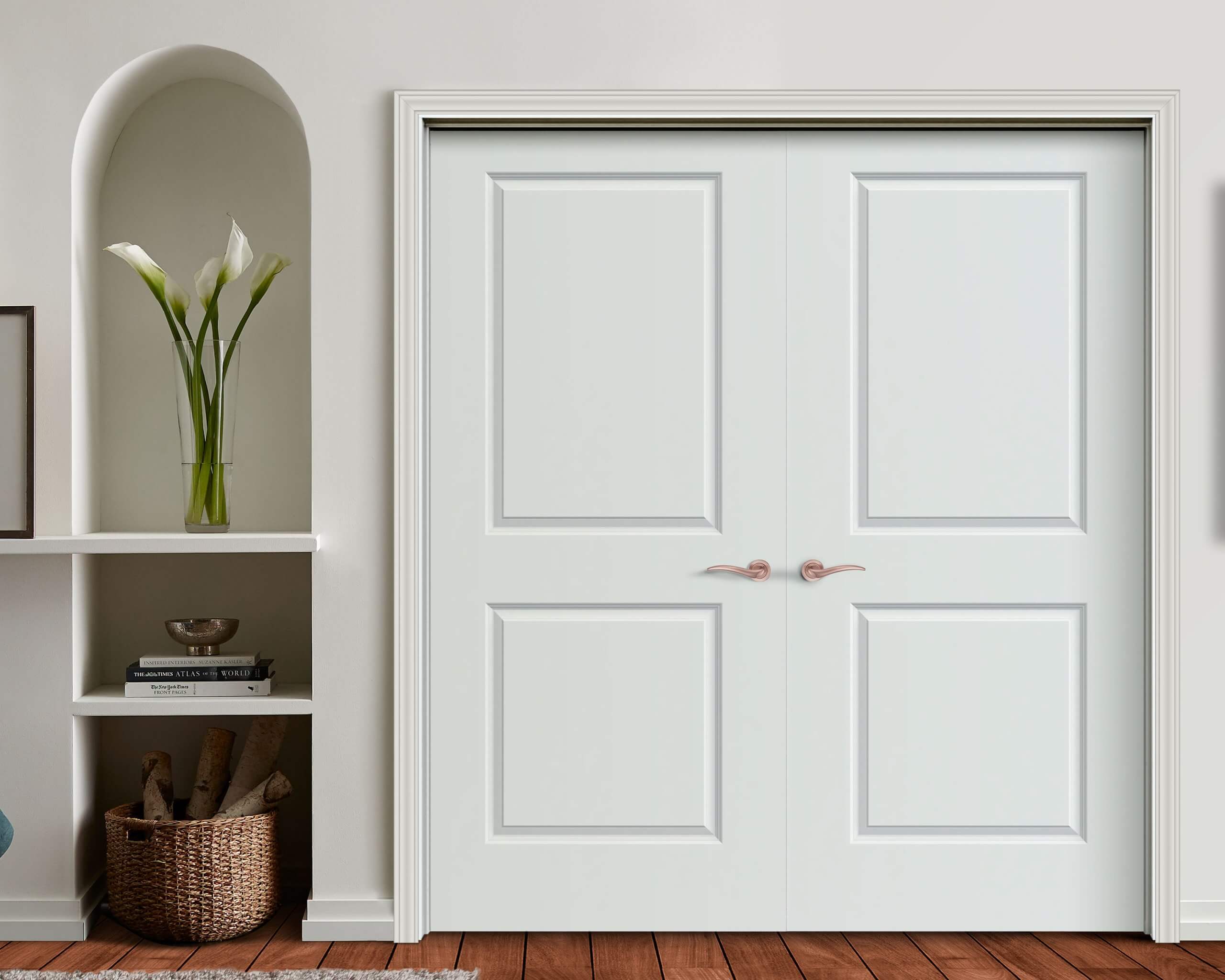
Photo courtesy of JELD-WEN
As more consumers created home offices during and post-pandemic, a demand for sound-proofing these workspaces began to trend. In an attempt to reduce external noise, solid-core doors regained popularity, noted McKay. “There is a higher attention put on the solid core doors for their feel and the sound transfer class (STC) benefits.”
JELD-WEN has also seen an increase in sales of fire-rated interior doors, which McKay said relates to rising housing costs. Multi-family housing situations are on the rise, he explained. Basement apartments are being created to house two families under one roof. “You need a fire-rated door for the furnace room, and for the door leading from the basement to the first floor, in these situations.”
McKay listed a couple of new style trends, including a slight uptick in the utilization of eight-foot interior doors. Also, when a grander opening is required, flat panelled French-style doors that provide home owners an opportunity for personalization and unique accents have gained some traction. In contrast, although barn doors speak to modern aesthetics, McKay has seen a decrease in their popularity. “It is literally hanging on a rail, so there is more sound transfer with a barn door over a swing door.”
With many post-pandemic supply chain issues now cleared up, McKay said labour shortages, shipping and delivery concerns are just part of the business. He reported that consumers are increasingly concerned about purchasing responsibly-sourced products, and JELD-WEN wants to be at the forefront with its offerings.
“We are always taking steps to continue to reduce volatile organic compounds (VOCs), while creating a high performing, sustainable door. All our manufacturing is done in Canada,” he concluded.
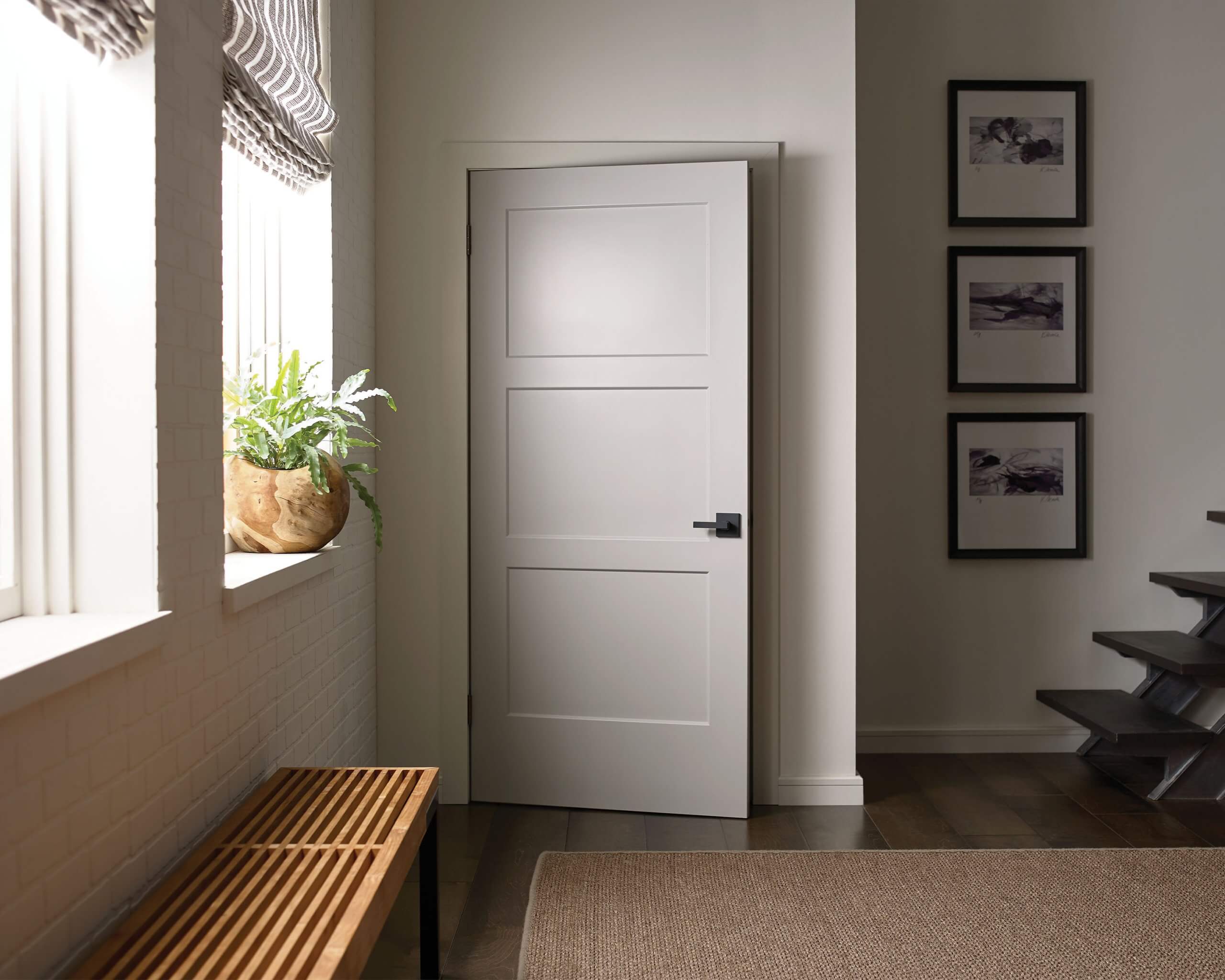
Photo courtesy of JELD-WEN
Mouldings and doors remain flat, but demand may balloon
A lack of housing in Canada will prompt the acceleration of new builds in 2024 and beyond. Supply chain issues must be navigated – as the country increases building projects and contractors demand more material, suppliers will need to be on their toes to keep shelves stocked.
As builders look to reduce costs with pre-finished materials and pre-hung doors, consumers are choosing interior doors and mouldings with a modern look and straight lines – all with an emphasis on quality and sustainability.
Opportunity is indeed knocking for companies that specialize in these products, as more homes with smaller footprints take shape across the nation. —
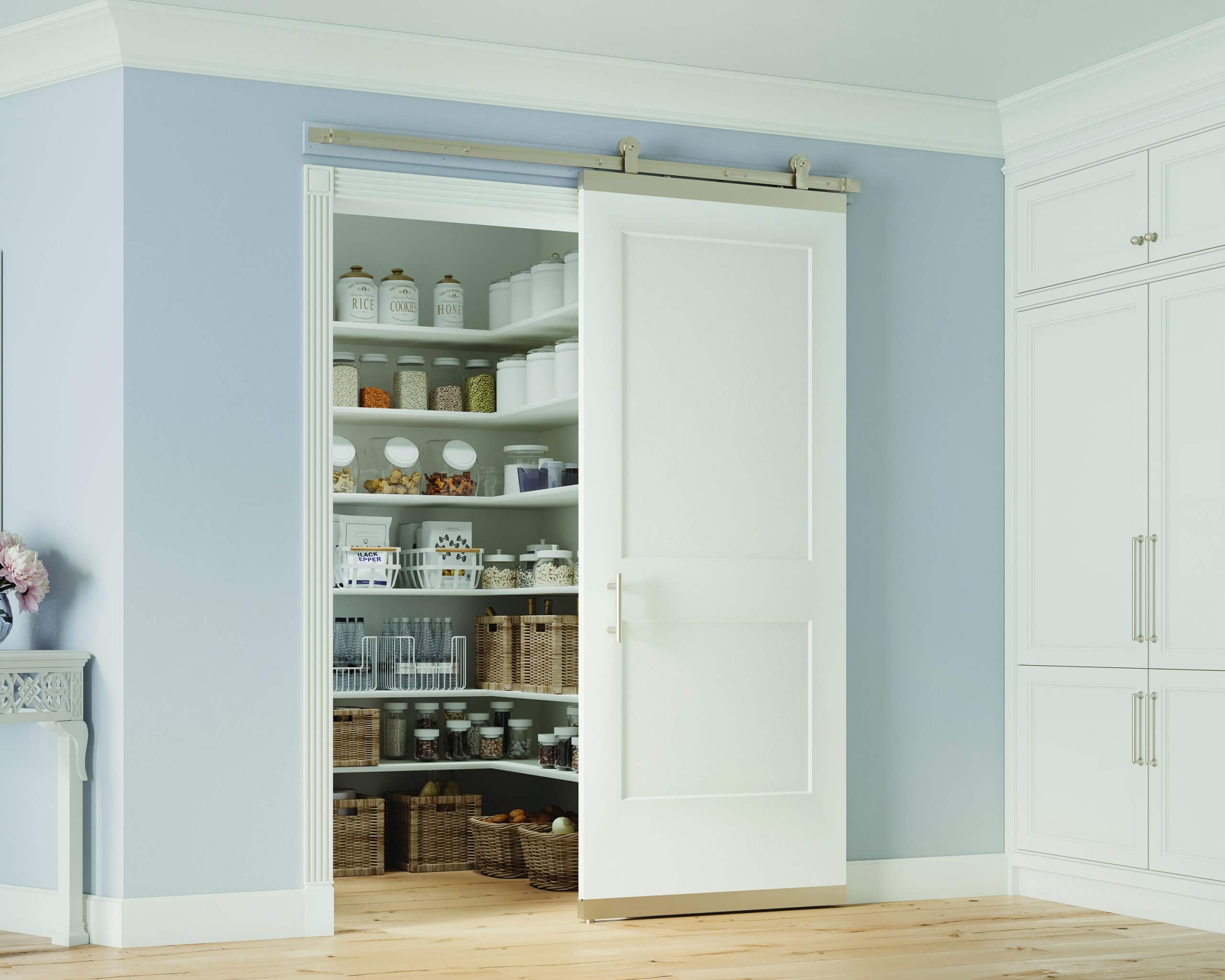
Photo courtesy of JELD-WEN
